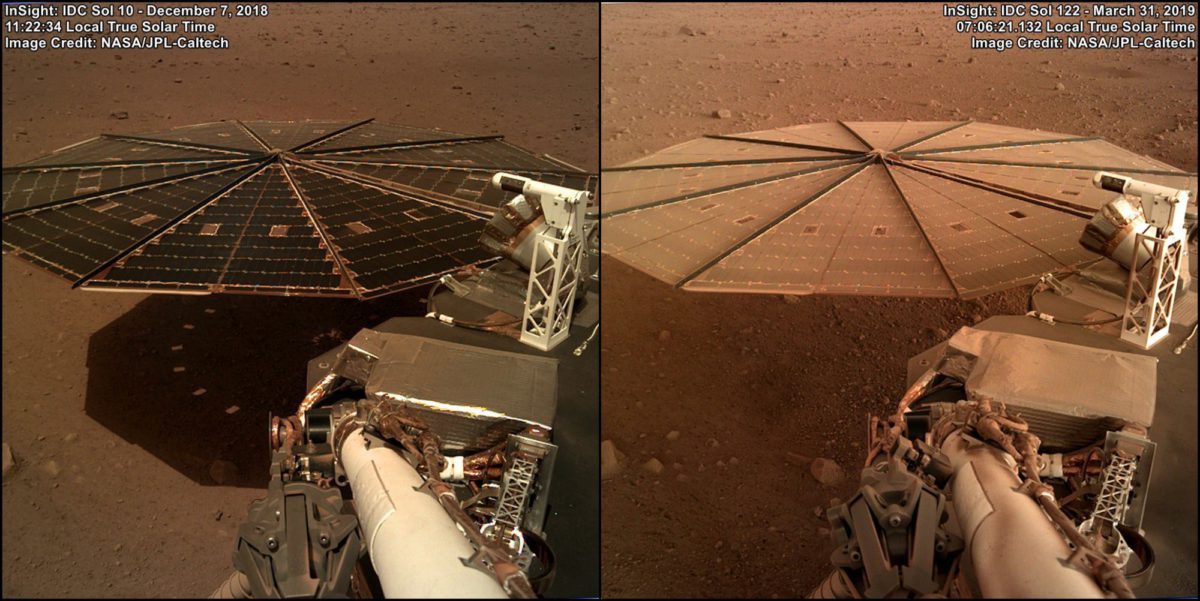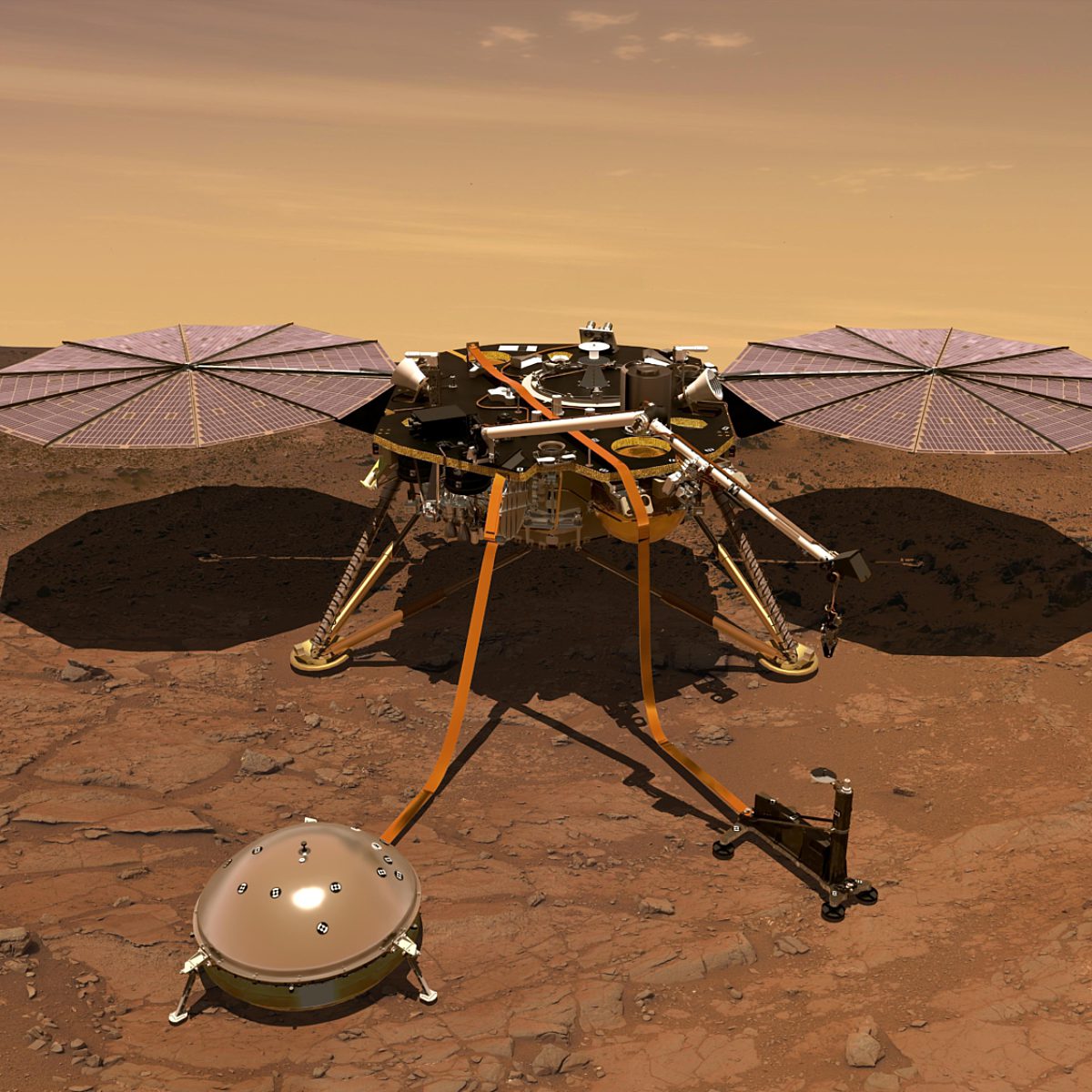Emily Lakdawalla • Apr 23, 2019
InSight Detects Some Very Small Marsquakes
InSight has finally detected its first Marsquakes, but so far, none have been large enough to produce good science. Still, it’s great news that the seismometer is producing sensible data.
InSight, NASA's Mars lander that studied the planet's interior
InSight was a Mars lander studying the red planet's interior to learn how other worlds are made.
News Brief
In a press release today, the French space agency CNES announced that InSight’s SEIS instrument has certainly detected 1 quake, and possibly 3 more:
On 6 April, on the 128th Martian day or ‘sol’ of the mission, a quiet but distinct seismic signal was detected similar to quakes detected on the surface of the Moon by the Apollo missions....
Three other signals, which occurred on 14 March (Sol 105), 10 April (Sol 132) and 11 April (Sol 133), could also be of seismic origin. The signals were far more ambiguous to the InSight team, but at least two do not appear to have been caused by wind or other unwanted sources of noise.
InSight was sent to Mars to find out what’s happening deep inside the planet. One of its two main instruments, the heat probe, has so far been unable to produce useful science about Mars’ interior, because it has not yet penetrated the surface. (Unfortunately, it seems to have hit a rock.) So scientists have been waiting with bated breath for the other instrument, its seismometer to produce results. Seismology depends on seismic waves traveling through rock and bouncing off internal layers to probe a planet’s interior, so for the seismic experiment to work, InSight’s team needed Marsquakes to happen. Mars hasn’t been very cooperative (it rarely is).
For more on what’s happening with the heat probe, read on at the German space agency DLR’s Insight Logbook, by Tilman Spohn. The entry dated 11 April 2019 details 3 hypotheses for what could be affecting the mole’s ability to penetrate.
Finally, a calendar note: InSight’s first public data release at the Geosciences Node of the Planetary Data System is scheduled for 24 May 2019. The InSight mission already has a generous raw image release policy, so the data release shouldn’t contain many surprises. But the Geosciences Node also archives other interesting mission-operations documents, so it’ll be interesting to dig through the release when it becomes available.



 Explore Worlds
Explore Worlds Find Life
Find Life Defend Earth
Defend Earth


